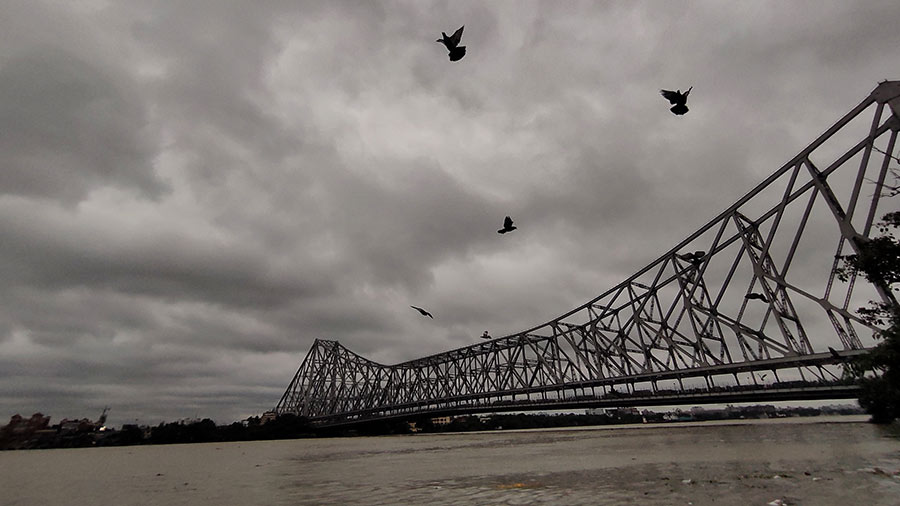Some more rain and gusts of wind are what Kolkatans can expect from Cyclone Sitrang, but the Royal Bengal Tiger might have it far worse.
The possible impact of the cyclone on Kolkata has reduced compared with earlier predictions, according to the Indian Meteorological Department (IMD). “The worst has passed over Kolkata and the city is not expected to be impacted much more, apart from some rain,” said G.K. Das, head, IMD Kolkata, around 4pm on Monday.
The Sunderbans forest across West Bengal and Bangladesh, including the tiger reserve in India, might not be so lucky. “The Sunderbans forest, spread across West Bengal and Bangladesh, is likely to be significantly affected. The impact will be more on the Bangladesh part of the Sunderbans as the landfall is slated on the Bangladesh coast,” said Mrutyunjay Mohapatra, director general, IMD, on Monday afternoon.
“The landfall might happen around 2am, but the wind will become stronger about four hours before that and is likely to overlap partially with the high tide, thus magnifying the damage,” added Mohapatra.
Tidal wave danger
The peak of the high tide on October 24 night will be at 10.31pm. The overlap of the storm and high tide might push the water surge to over 20ft, according to IMD.
“A tidal wave of about 1m height above the astronomical tide is likely to inundate low lying areas of West Bengal (North and South 24-Parganas) around the time of landfall,” stated IMD in its storm-surge warning around 3.30pm on October 24.
With the peak astronomical tide height expected to be 5.36m (about 18ft), the cyclone is thus likely to push the overall tidal wave surge to about 21ft. The dangers in human-inhabited parts of the Sunderbans include saline water breaching embankments or flowing over them spoiling the paddy in the fields. In areas populated only by wildlife there are no embankments and hence the risk of flooding is greater.
Most of the Sunderabans forest area, including the 2500sq km Sunderban Tiger Reserve, is adjacent to the Gosaba block and a smaller portion is near the Hingalganj block, both close to the Bangladesh border.
The Sunderbans forest, including human-inhabited areas, had been significantly impacted by the cyclones Aila, Bulbul and Yaas, as the storms were accompanied by heavy rain and overlapped with high tide.
Effect on animals
According to the IMD, Sitrang “is very likely to continue to move north-northeastwards and intensify further into a severe cyclonic storm in the next 6 hours”. The IMD expects the storm to “very likely” cross the Bangladesh coast between the Tinkona island and Sandwip, close to Barisal in Bangladesh, early on October 25.
The West Bengal forest department is trying to minimise the cyclone impact. “We expect the eastern part of the Sunderbans national park to be more affected by Cyclone Sitrang and have already taken a series of steps to minimise the impact,” said Tapas Das, field director, Sunderban Tiger Reserve.
The steps include closing down of forest field offices at Chandkhali, Haldibari and Kendo, setting up floating camps, shifting the forest personnel to safe places, anchoring all vessels; keeping speed boats and personnel ready for countering emergencies. Tourists have been barred in the area on October 24 and 25.
“We really do not know in detail how such disasters affect wild animals, including the tigers. Intrusion of saline water may not be that big a problem, as we have seen often. They drink saline water if sweet water is not available. However, we are keeping a close watch,” said a senior official.
